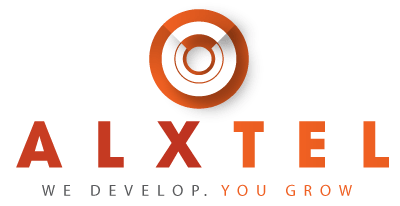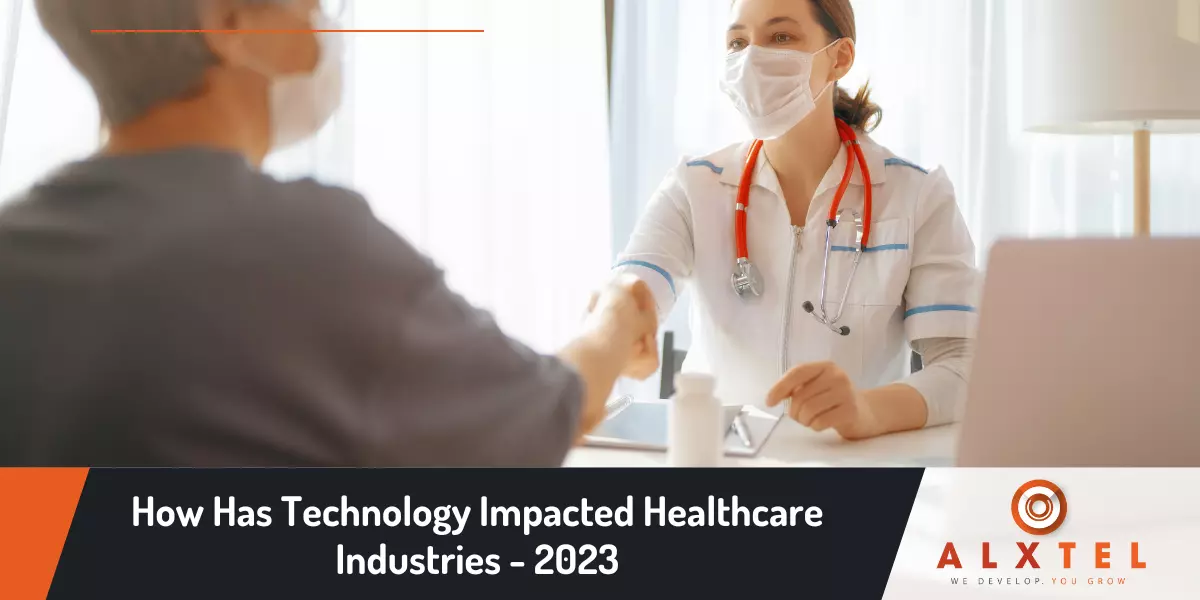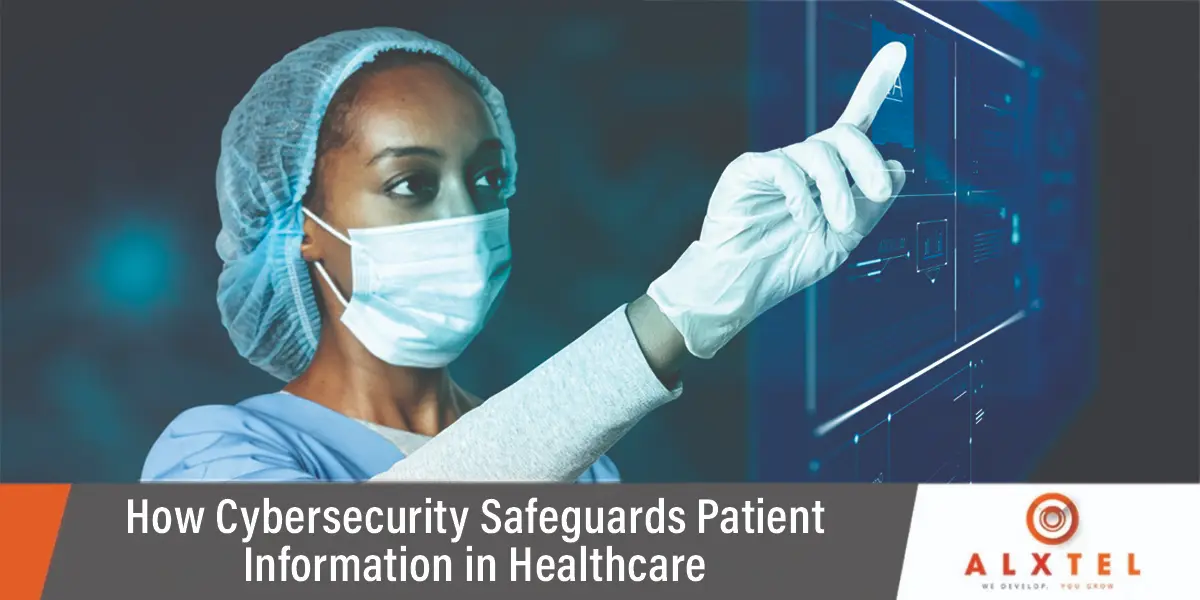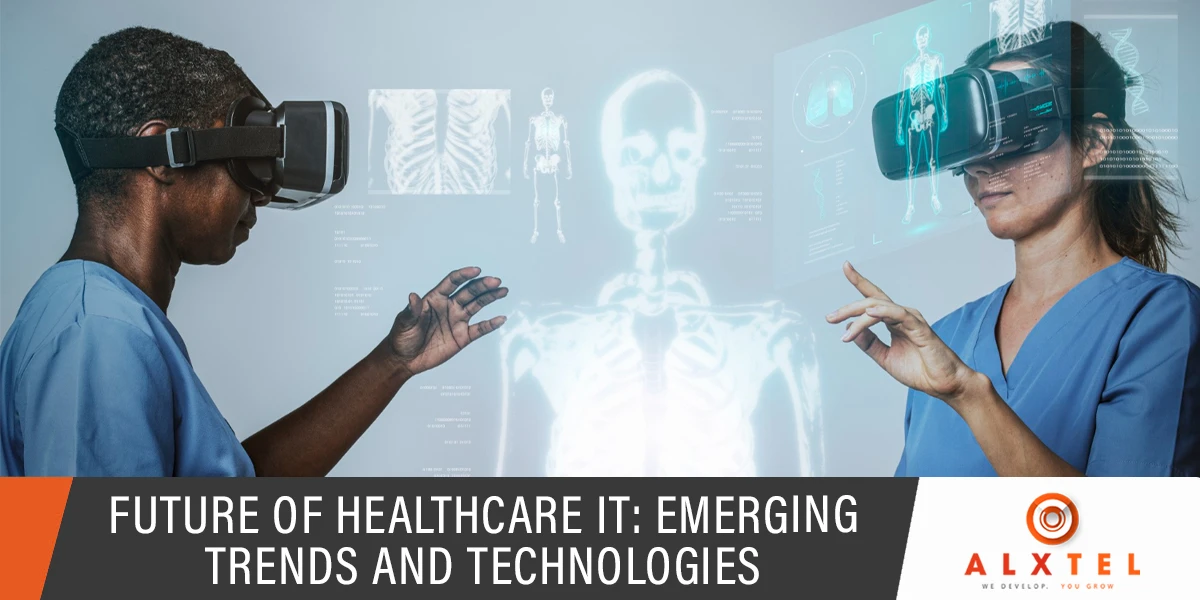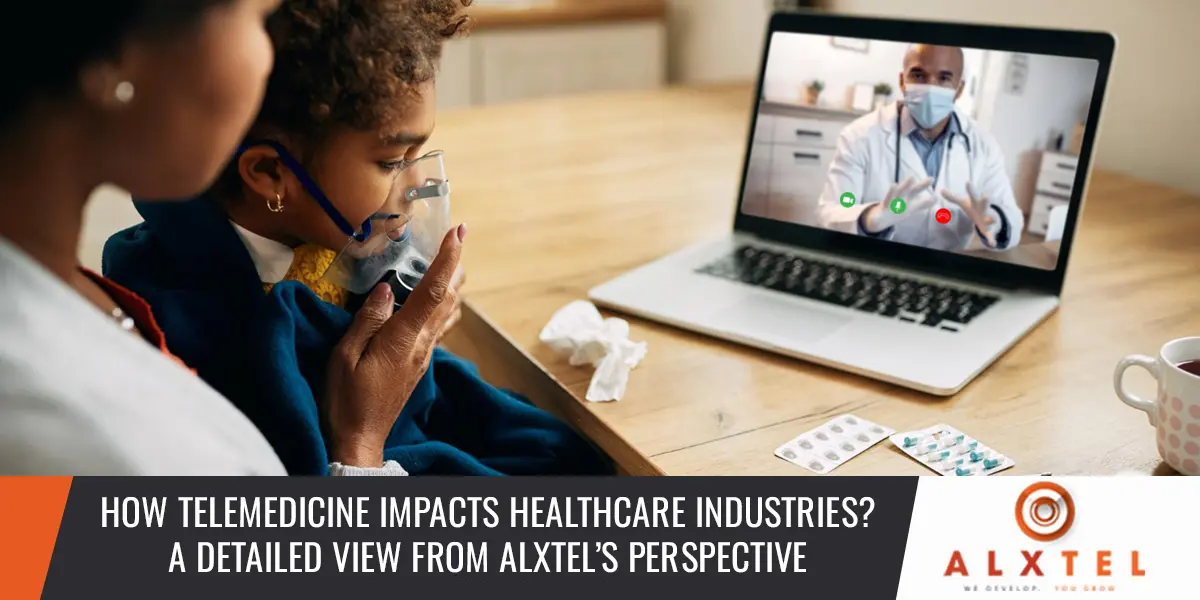Technology is transforming different sectors at an astounding rate. Among the industries where technology is making a big impact is healthcare. In this article, we will discuss how technology has impacted healthcare, and what the advantages of technology are in healthcare.
As a result of managed IT services for healthcare, lives can be saved, care can be improved, and staff workloads can be lightened. It can be difficult to know how technology should be used in healthcare due to its many applications. Considering this, here are some ways in which technology can improve healthcare.

How does technology impact healthcare?
Digital technology is revolutionizing healthcare and transforming the practice of medicine. As a result of digital technology, standards of medical care have greatly improved. Both healthcare professionals and patients have greatly benefited from the transformation.
Healthcare has greatly benefited from digital technologies in the following areas:
Improved Access to Medical Information and Data:
Digital revolution has made it possible to access and store data more easily. Patients’ data can now be accessed from anywhere by healthcare professionals. Furthermore, the intranet and internet have made it easier for healthcare professionals to exchange medical information rapidly with one another, resulting in better care for patients.
Improved Lines of Communication:
During the early days of healthcare, healthcare workers communicated using beepers. In today’s world, digital technology has made it very easy for patients and healthcare providers to communicate. Email, smartphones, text messaging, and other communication methods are available to healthcare workers. No longer must physicians send reminder letters to patients about their appointments and tests. Technology has simplified and reduced the cost of all this. Online platforms and social media can also be used by medical professionals to communicate and make webinars. It has become easier to communicate across geographical boundaries thanks to teleconferencing.
Big Data:
A great advantage of digital technology is that it enables clinicians to collect big data in a short amount of time. Data can be instantly collected from a much larger and more diverse population than ever before using digital technology for epidemiological studies, research, or clinical trials. By collecting such data, healthcare professionals can conduct meta-analyses and stay current on cutting-edge techniques. Furthermore, clinicians can better identify risk factors and recommend preventive and intervention steps through the use of big data.
Telemedicine/Telehealth:
Healthcare providers are still in short supply in many rural areas around the world. Video conferencing is one of the benefits of digital technology. Telehealth is both cost-effective and can be used to determine which patients need emergency treatment. Patients who cannot physically visit psychiatrists’ clinics often receive counseling via telehealth today. Remote healthcare workers can also receive training and education via telecommunications.
Online education:
Online education is another advantage of digital technology, especially for healthcare degrees. Nowadays, students wishing to pursue a career in healthcare can earn their healthcare degrees completely online. As a result, they can study wherever they want, from any school they want, and at a time that is convenient for them. Traveling long distances and taking time off work for healthcare professionals can be eliminated thanks to online education.
Electronic Health Records:
With the advent of digital technology, patient medical records have been greatly improved. Large paper files used to be moved between departments in the old days. It was common for patient medical charts to be lost or damaged during transport. Patients who came to emergency departments at night or on weekends sometimes had difficulty finding medical records. A large box containing the patient chart had to be sent by physicians when referring patients. Various medical records remained in the hands of dentists, psychiatrists, internists, and rehabilitation specialists. It was a total mess. EHRs have made life easier for patients and healthcare providers, thanks to electronic health records (EHRs). By utilizing EHRs, all patient data can be centrally stored and made available more quickly, resulting in improved care and better outcomes. Medical billing can also be made easier, faster, and smoother with EHRs.
Health Apps:
Hundreds of health apps have also been developed as a result of the digital revolution. Using these apps, patients can monitor their health and disease, access medical information, get test results, and be reminded when their checkup is due. Additionally, healthcare apps allow workers to quickly review test results, drug dosing recommendations and other urgent information.
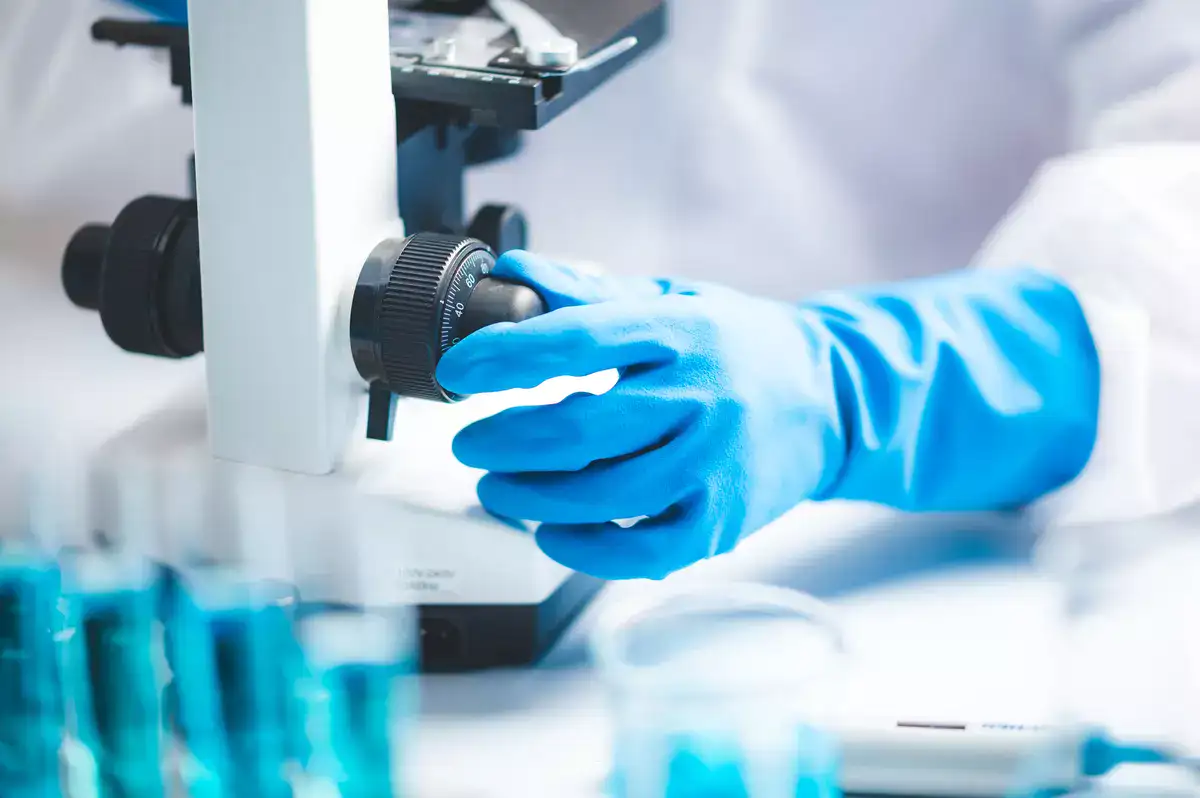
How does medical technology affect us positively and negatively?
It is still essential that doctors possess excellent clinical skills and know the human body, but they also need to distinguish between good and bad medical technologies.
There will always be a need for technology, but it is constantly evolving and expanding. Life can be improved as new technologies enter the scene. However, it may also negatively impact physical and mental well-being in some cases.
Positive effects of technology
Technology is a part of almost everything we do, whether we realize it or not. Our physical and mental health may be positively impacted by technology in the following ways:
- Medical apps for tracking chronic illnesses and sharing vital information
- You can use health apps to track your diet and exercise as well as your mental health
- Medical records that allow you to see test results and refill prescriptions online
- Consultations with virtual doctors
- Researching and learning online
- An improved sense of connection with others due to improved communication
Ways to make the most of technology
Each new technological advancement makes it easier to go overboard. Getting caught up in it can have a negative effect on our minds and bodies. Is there such a thing as too much?
There is no one-size-fits-all answer. If you rely too much on technology, here are some signs:
- A family member or friend complains that you are too tech-savvy.
- In favor of technology, you’ve neglected relationships, also known as phubbing.
- Your work has been hindered by it.
- Technology use is causing you to lose sleep or skip physical activity.
- If it is causing you stress or anxiety, or if you are experiencing muscle pain or overuse injuries, it may have caused you stress or anxiety.
- You don’t seem to be able to stop.
Here are some tips on limiting screen time if that sounds familiar:
- Don’t keep checking your phone for updates all the time by clearing it of unnecessary apps. Use your devices only for a specified, limited period of time.
- Spend some time exercising instead of watching television.
- Electronic devices should not be used in the bedroom. Make sure they are charged in another room. Before you go to bed, make sure all glowing devices are turned toward the wall.
- Make mealtimes gadget-free.
- Relationships in the real world should take precedence over those online.
Taking care of children is your responsibility if:
- Don’t allow them to watch screens during meals or right before bedtime, but limit their screen time during certain times of the day.
- Their work is well known. Examine the programs, games, and apps they’re using, and encourage the ones that are engaging over the ones that are passive.
- Explore technology and play games together.
- Controls for parents can be used to your advantage.
- Allow children to play unstructured, tech-free, regularly.
- Face-to-face friendships are better than online ones.
Takeaway
Our lives are influenced by technology. There are some negative effects associated with it, but it can also provide a range of positive benefits in areas such as education, health, and general well-being. You can minimize the negative effects of technology by identifying and addressing the possible negative effects.
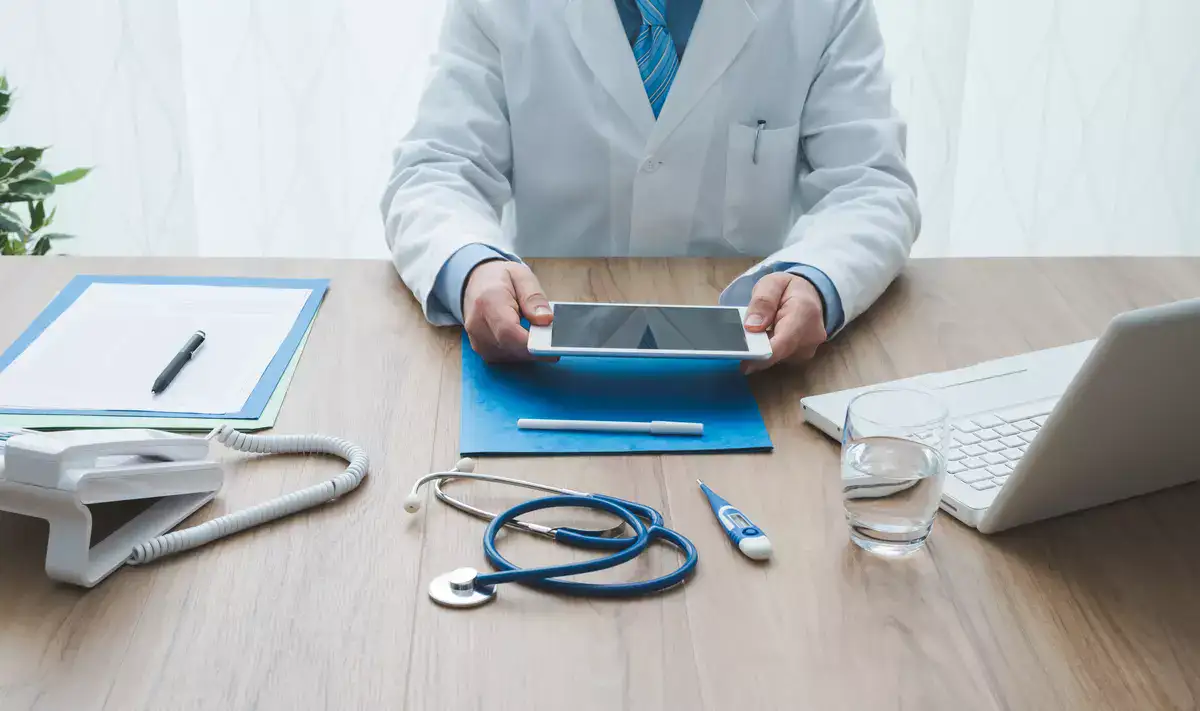
Negative Effects of Medical Technology:
Even though the technology was developed by software or hardware experts with high technical skills, it does not necessarily add value to a clinical environment due to the unique time constraints and limitations.
Cybersecurity Risks in Healthcare
In healthcare, technology makes it easier to generate, store, and transfer data between systems and parties. From diagnosis through treatment, this proliferation of data leads to better healthcare management when it works well and when parties adhere to HIPAA compliance.
A large percentage of these data capabilities in healthcare are powered by cloud computing, creating the category of cloud-connected medical equipment and software. Devices with sensors and the ability to communicate are commonly referred to as web of things (or IoT).
Although medical devices provide a range of benefits in healthcare, the amount of data generated and circulating around the internet poses a number of challenges.
Breach of Protected Health Information
By doing so, third parties may have access to the data. Data breaches involving patient information are common, whether by malicious actors or by accident.
The patients who use their systems may be exposed to risks if they rely on external cloud service providers for managing their data infrastructure.
Altered Data may Inadvertently Lead to Incorrect Healthcare Decisions
A cyber security breach isn’t only about private data exposure or ransomware. There can be serious consequences associated with altered data.
It is imperative that datasets used by patients and healthcare professionals are accurate and complete. Erroneous diagnoses and treatment plans can be caused by deleting or altering data.
Altered Device Functionality May Result in Adverse Results
In healthcare, IoT has one of the greatest disadvantages. Further, patients connected medical devices can be accessed without the necessary security protocols to change their functionality. A serious device malfunction in a life-and-death situation would be the worst-case scenario.
Fortunately, there are no documented cases of medical devices being hacked for such purposes, so it is unknown whether cybersecurity contributes to the disadvantages in healthcare. However, risk must remain a priority.
Lack of Empathy in Patient and Doctor Interaction
Even when patients and healthcare professionals are not physically present together, technology can help keep them connected. Through the use of data and technology, a treatment plan can be provided and updated on an ongoing basis.
Clinical professionals are increasingly relying on telehealth to treat COVID-19 patients. During these challenging times, such tools have enabled the healthcare system to continue operating and to provide continuity of care for patients.
The ability to monitor patients remotely can also reduce healthcare costs by identifying potential problems earlier and preventing complications later on. It also allows for the addressing of clinician shortages in many countries, including here in the United States, particularly in remote areas, via remote monitoring and telehealth.
Patients Interact with Technology Instead of a Live Care Provider
Medical dashboards and computers remove the human touch from treatment, resulting in a lack of empathy for patients.
Risk of Miscommunication
It is particularly important to avoid using technology as the interface of care for the elderly and the most vulnerable patients, as using technology can result in confusion, treatment plans being misunderstood, or non-compliance with treatment plans.
Frustration with Poor Implementation
Medical technology in healthcare has both pros and cons, as we continue to examine them. But technology is only good when it works. A study by Asurion found that 80% of Americans experience frustration with technology at least once a day.
System efficiency, ease of use, and accuracy are aspects of technology necessary to offset the disadvantages of technology in healthcare. A clinician’s or doctor’s ability to manage and understand the technology they use is critical, rather than making it difficult.
More Struggling, Less Caring
A clinician or healthcare professional who spends more time worrying about technology than on patient care is likely to ignore future developments and technology altogether. However, it is crucial to ensure technology-aided outcomes are more accurate, or better at diagnosing, even for healthcare professionals who are in favor of using and implementing technology.
Too Much Reliance on Technology
Healthcare professionals should be aware of the limitations of Artificial Intelligence and Machine Learning technologies as they become increasingly prevalent. In machine learning, many models are trained on historical data that cannot be easily adapted to change and with operational data, the mismatches between trained and operational data are large. A clinician relying too heavily on AI/ML systems might treat the system’s predictions as gospel, resulting in a lack of cross-checking or consideration of alternatives.
It is unlikely that technology will continue to be adopted in healthcare if it is not improving speed, efficiency, or accuracy.
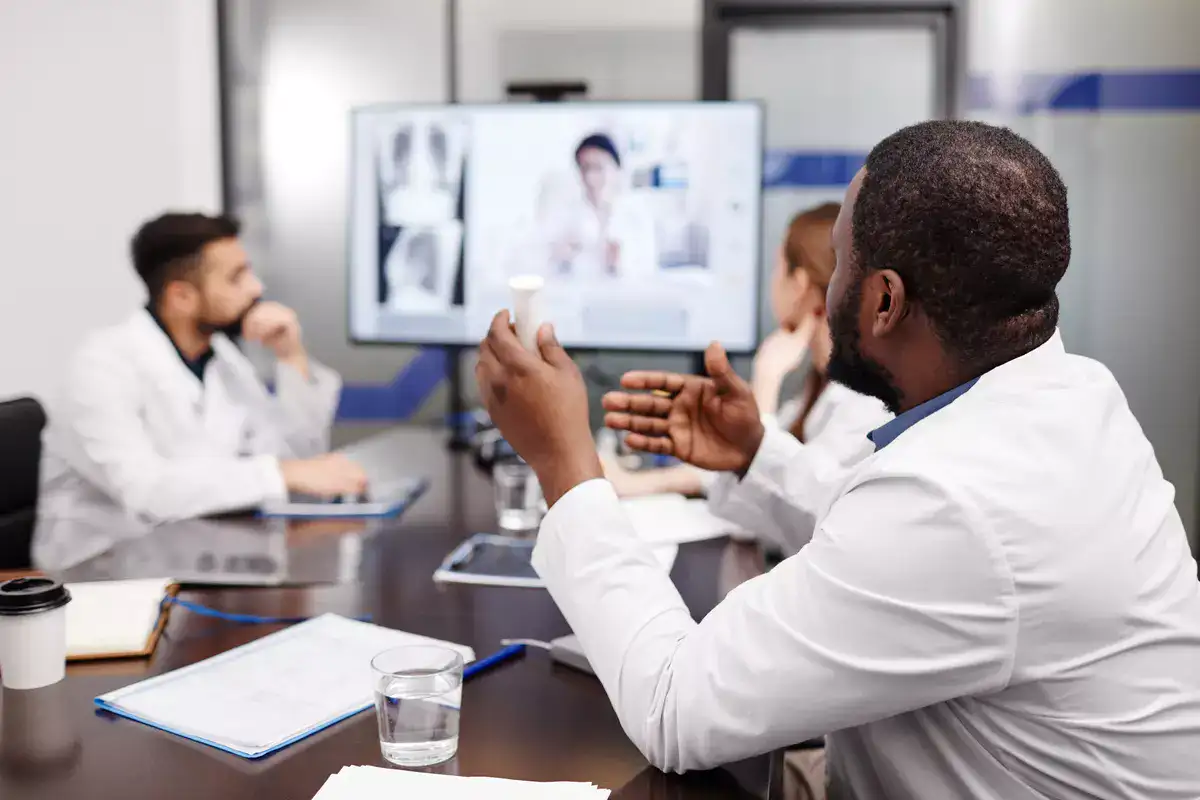
What are the 4 major digital challenges in the healthcare industry?
Digital health is neither a new concept nor a revolutionary one. Medical images and telemedicine, for example, date back over a century ago, while prototype wearable devices have been used by researchers to combat obesity since the 1940s, with designs being developed as far back as the 1920s. There is no doubt that digital health has had a tremendous impact on an industry that has been notoriously resistant to change for years now.
Societal Factors
Digital health systems are driven by technology, but they cannot be viewed solely from a technological perspective. The general population is often slow to adopt and accept new technologies, making it difficult for digital technologies to offer affordable and easy-to-use healthcare solutions to an aging and growing population. Regulators and the commercial sector may be perceived as lacking accountability, which contributes to the lack of acceptance of digital health.
Ethical Challenges
As healthcare digitizes and mobile and IoT devices are used to collect data, many ethical questions arise. Amazon, Apple, Google, Facebook, and Samsung are all consumer tech companies that have entered the digital health domain, and one of the most commonly recurring themes is how they will play their roles. Companies such as these collect, store, and analyze health data, so privacy, data protection, and informed consent are important considerations. Additionally, the nature of health data has changed; we are now collecting more private user-generated data, especially through social media and wearables, than ever before.
Role of Artificial Intelligence
AI can be used to improve diagnosis, select treatments, and predict clinical outcomes based on data from digital health systems. A growing number of AI-enabled digital health solutions pose challenges regarding safety, explain ability, and fairness. It is less acceptable for AI systems to make errors when it comes to safety, i.e., AI systems are held to higher perceived safety standards than humans.
In the European Union, the General Data Protection Regulation (GDPR) provides clinicians and patients with the right to understand how AI decisions are made. It is not only clinicians and patients who will benefit from improved trust and transparency in AI systems; knowledge about internal operations and decisions will increase the accuracy and generalizability as well. AI technologies must, therefore, be understandable, explainable, and transparent in order to be deployed in clinical settings.
Increased Connected Health Solutions
Digital health aims to facilitate data exchange among patients, devices, and clinicians. Connectivity enables clinicians to share patient information more efficiently and intelligently, and has a strong connection to digital health principles of predictive, preemptive, and personalized care. The COVID-19 pandemic also requires connected health solutions. There are, however, safety and security concerns associated with more connected health solutions.
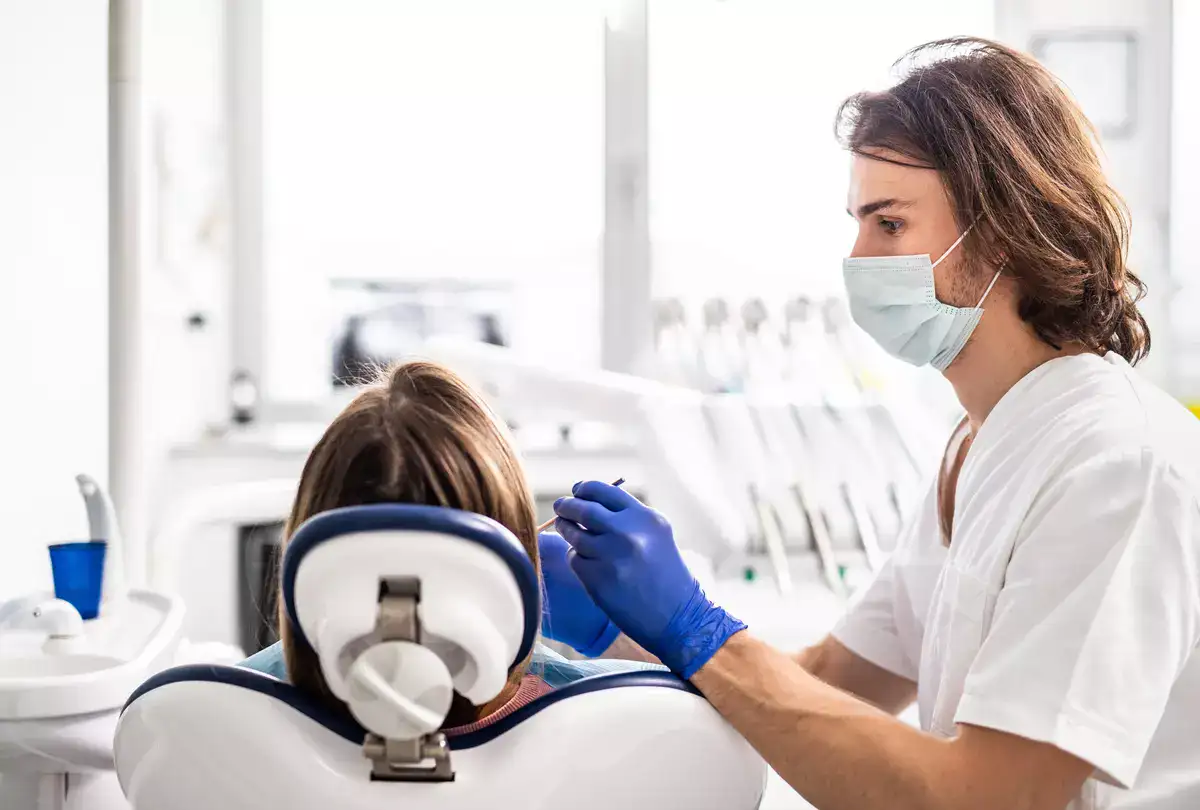
What is telemedicine / telehealth and how does it work?
What is telehealth?
Is telehealth and telemedicine getting a lot of attention recently? The comfort of your own home and the safety of your health care provider are both great benefits to connecting online.
What does telehealth mean?
Health care providers can provide you with telehealth – also known as telemedicine – without seeing you in person. A computer, tablet, or smartphone with internet access is typically used for telehealth.
Telehealth care can be delivered in several ways:
- Take advantage of live phone conversations or video chats with your healthcare provider.
- Health care providers can send you secure messages, emails, secure messaging, and secure file exchanges.
- Monitor your health at home with remote monitoring. A vital sign device, for example, might help your doctor monitor your progress by gathering vital signs.
How Telemedicine Works?
You can receive medical services in a variety of ways depending on what your doctor offers. There are two most common types:
A patient portal:
With a secure username and password, a patient portal allows you to ask for prescription refills, send emails to your doctor, and schedule appointments. Also, your doctor can explain the results of your lab tests and imaging tests to you. It is usually faster to do this than to call them.
Virtual appointments:
There are some doctors who will let you schedule an appointment over the phone or via video conference. These meetings can also be held at mental health clinics and urgent care clinics.
What is the best way to use telemedicine?
Before you use the technology, try it out. There are many types of telemedicine. Do a trial run with your doctor before scheduling your virtual appointment to ensure you understand it and work out any kinks. A program, app, or software may need to be downloaded. There may also be a virtual waiting room where you can wait for your turn.
Prepare yourself. Write down your symptoms, medicines you have taken, and questions you have before your appointment, so that you do not forget anything.
Increase your bandwidth. How strong is the Wi-Fi signal in certain areas of your house? Slow connection speeds and frozen screens can make even an easy appointment difficult. Place yourself where the signal is strongest.
Punt is coming. Remember that even if you start with telemedicine, you may still need to see your doctor in person. While that may be frustrating, you’ll feel better faster.

What is the main goal for using technology in healthcare today?
Electronic health information exchange is made possible by health information technology (IT). Using health information technology more effectively is the focus of Healthy People 2030
With the help of technology, we have transformed the way we care for patients, manage hospitals, discover and innovate better drugs, and predict the course of treatment.
Healthcare is deeply rooted in the use of technology. A combination of Internet of Medical Technology (IoMT), Artificial Intelligence (AI), and deep learning has enabled technology to offer rapid care management, reduce casualties in the event of an emergency, and provide real-time access to patients’ histories – all by tapping a screen in an emergency.
A simple desire to improve has driven the healthcare IT industry to use big data, virtual reality, mobile technology, wearable medical devices, and Telehealth to treat patients better. Artificial intelligence has made data management easier for doctors and enabled them to focus on offering excellent patient care instead of focusing on data management and systems.
Conclusion:
As we look back on our world’s technological advancements, it is amazing to see how far it has come. The same applies to healthcare technology. Patient and medical professional experiences have been enhanced by improved operational efficiency and standards in patient care, as a result of the healthcare transformation.
Get in touch with AlxTel
Need support? You are our priority, We’ve got you covered.
Rapid response time to service requests, responding to all customer feedback to get in touch.
Our goal is to supply you with the best possible customer service across all our products and solutions. We look forward to helping you make the most of your AlxTel platform.
